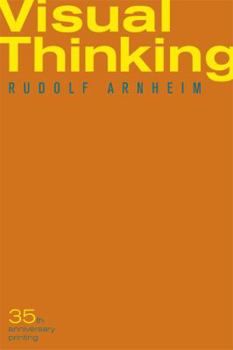Film as Art
Select Format
Select Condition 
Book Overview
In the fall of 1957 the University of California Press expanded Arnheim's 1933 book Film by four essays and brought that landmark work back into print as Film as Art. Now nearly fifty years after that... This description may be from another edition of this product.
Format:Paperback
Language:English
ISBN:0520000358
ISBN13:9780520000353
Release Date:September 1957
Publisher:University of California Press
Length:240 Pages
Weight:0.45 lbs.
Dimensions:0.6" x 4.5" x 7.2"
Related Subjects
Arts, Music & Photography Film & Television Humor & Entertainment Movies Performing ArtsCustomer Reviews
3 ratings
A major contribution to film studies, remains essential for its insights into the nature of cinema
Published by Thriftbooks.com User , 17 years ago
Read as an essentialist treatise on the nature of film as art, Rudolf Arnheim's "Film as Art" may feel like something of a dead end or a historical curiosity -- there was a period during which some of the major questions for cultural and art critics interested in film were: is film a new art form or does it draw its artistic potential from other more traditional art forms that can be said to be integrated into film? If it is a new form of art what is new about it? how should art critics approach this new medium? To these questions, Arnheim offers a powerful and convincing defense of the idea that film is its own art form, with its own distinctive artistic potential. Now that "we" no longer need to be convinced that film is an art form, or is at least capable of rivalling any other art forms on occasion, his detailed and meticulous argument that draws upon a broad familiarity both with the history and techniques of film to his day may appear dated and reactionary. I think this need to prove that film is an art against a number of prominent art theorists is really what one of the other reviewers ("vampyroboy," in an otherwise quite interesting review) is detecting when he describes the book as characterized by "self-hatred." On the other hand, Arnheim's book is not merely a reactionary treatise intended to prove that film really is a unique art form. Moreover, the book does more than merely defend one of the classical positions in the "realist" versus "formalist" debate -- Arnheim's position in this debate is much more nuanced than the standard histories of film and film criticism tend to attribute to "formalist film theorists." According to "formalism," the essence of film art lies in the formalist techniques available to the filmmaker, and that allow her to manipulate and transform film from a merely mechanical reproduction of reality into something genuinely creative and meaningful. This is supposed to be in contrast with "realism," according to which the essence of film art (and what makes good film art good) is its capacity to capture reality directly in its raw form. But Arnheim's position is much more interesting than either opposed position seems to allow. First, he argues that the apparent limitations of film -- the fact that it is two dimensional, that it was originally lacking sound (and later that sound had to be captured with great difficulty and lacking in the multidimensions that our experience of sound possesses), and that film is always a selection from what is visible within a frame, etc. -- these apparent limitations are precisely what open the space for and require creativity and manipulation on the part of the film artist. Because the filmmaker can't show all of reality or even a strict simulacrum of experience she needs to be creative in deciding which aspects of reality to select in order to capture the essence of a reality, and in order to convey the precise meaning that she intends from each shot. On the othe
a Very insightful theory about film studies!
Published by Thriftbooks.com User , 21 years ago
This book must be read by anyone with interests in film critiques and in Cinema in general.Arnheim argued that film comes from limitations , and ideed, I believe that he was absolutely right. Because film is not an unique art, but is builded up from other fields. The first thing that an artist must know is that you always have to leave something to be interpreted, you have to send a message. And how can you do that if you show everything?How can you possibly consider art something that does not need interptretation? Because like Arnheim said "what does not have a meaning has no place in art" Indeed, in his book , he explains that the composition of the film must be intermetiated between the margins of the screen. Also, that the black and white image is far superior to the coloured one.And here you can ask yourselves that how it is possible that the black & white photography is still used even nowadays? I believe that anyone interested in film should read this book.
Eye-opening analysis of the perceptual dynamics of film
Published by Thriftbooks.com User , 25 years ago
An amazing analysis of the perceptual principles involved in film viewing. Arnheim provides a fascinating and scholarly look at the psychological and physiological aspects of cinema. A profound and thought-provoking work.





